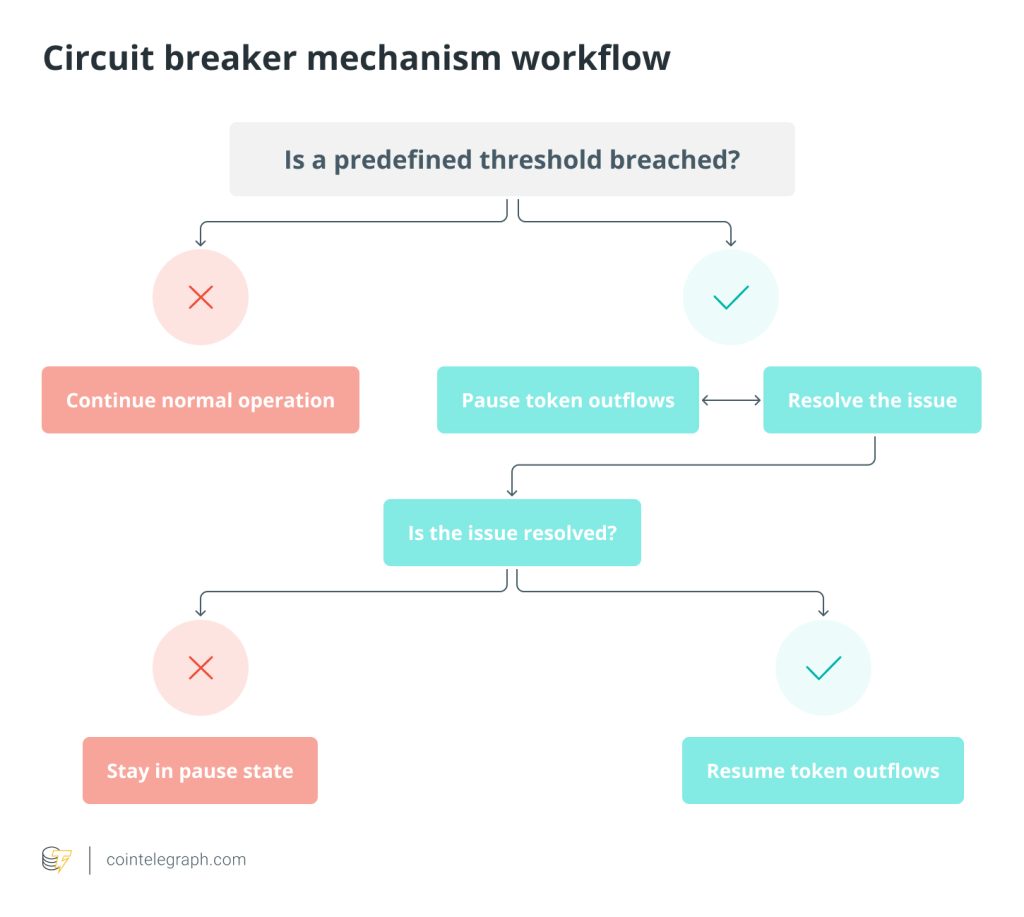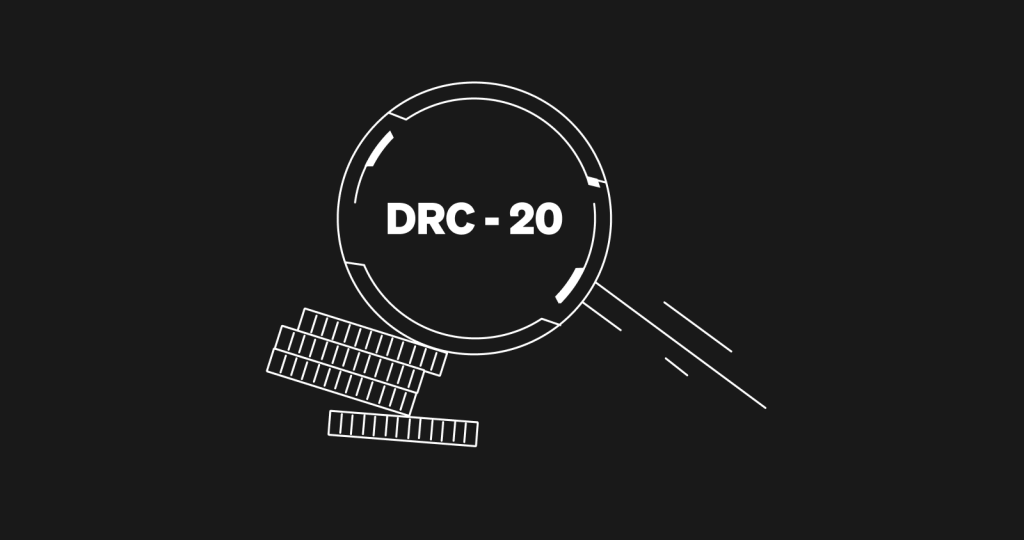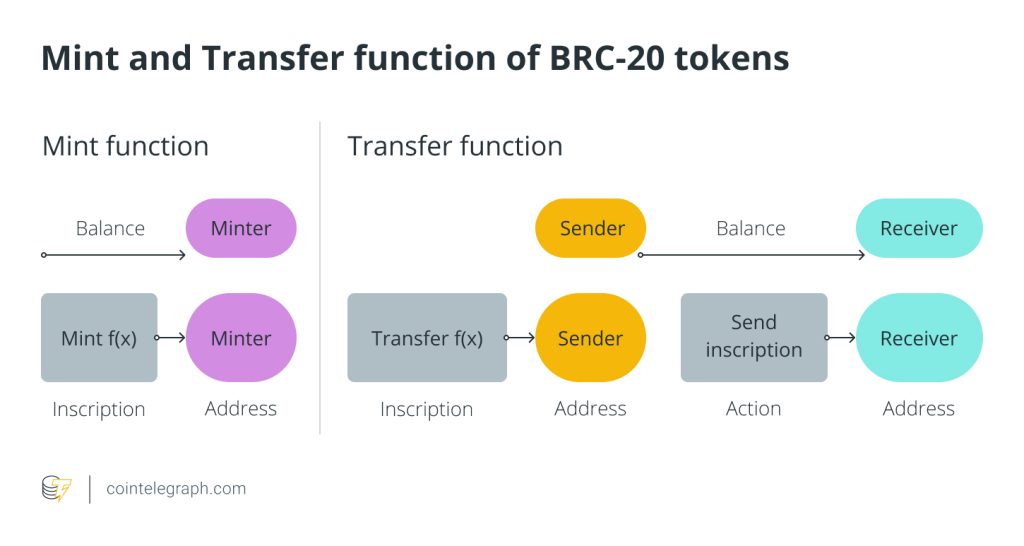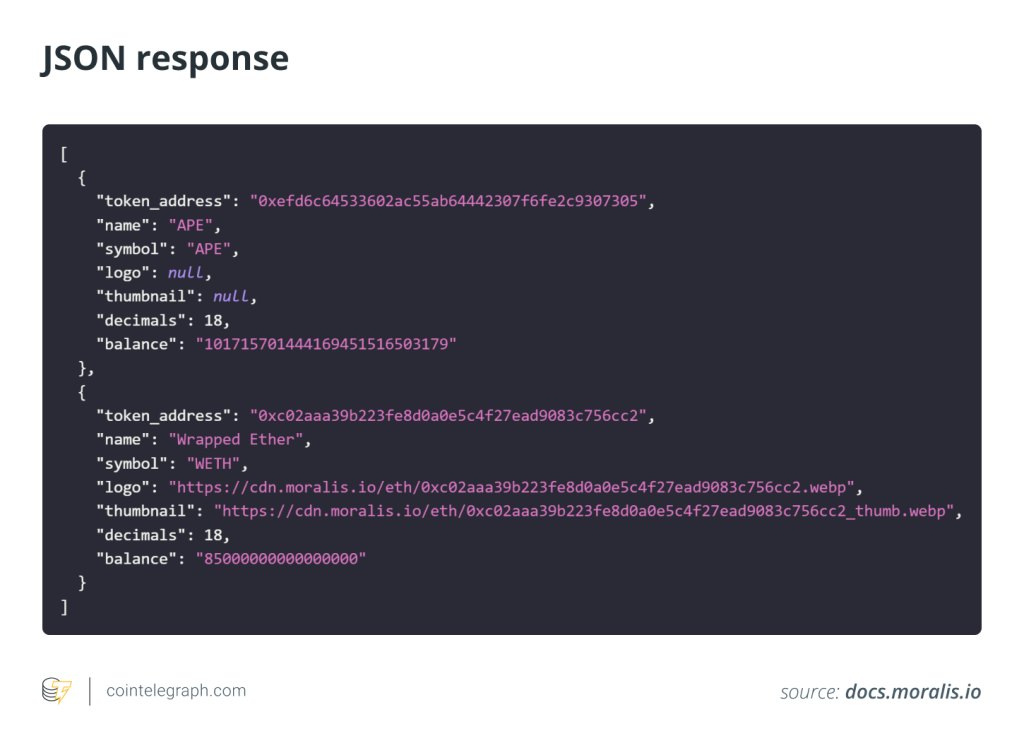Understanding ERC-7265: The new ETH token standard for DeFi security


The cryptocurrency industry and decentralized finance (DeFi) have grown tremendously in recent years. As a result, billions of dollars are locked into DeFi protocols, which attract cyber criminals who have exploited vulnerable points across the industry.
DeFi protocols have been a primary target of many hacks, resulting in significant losses for users. In 2022, crypto hacks led to a staggering $3.8 billion in stolen digital assets, according to a Chainalysis report.
In an effort to improve the security of DeFi protocols, a group of Ethereum developers has proposed a new standard called ERC-7265, which introduces a circuit breaker mechanism that can help to mitigate cyber risks and enhance security by temporarily pausing token outflows when predefined thresholds are exceeded.
What is the ERC-7265 standard?
ERC-7265 is an Ethereum Improvement Proposal (EIP) that defines a standard for a circuit breaker mechanism. A circuit breaker is a control mechanism that can temporarily disable a system or process in the event of an overload or other problem.
The circuit breaker can be used to pause the outflow of a token during a malicious attack and help mitigate risks to safeguard the protocol and its users. When a predefined threshold for a usage metric is breached, the circuit breaker will pause token outflows until the issue is resolved. This can help prevent large losses in a flash loan attack or other malicious exploit.
For developers working on protocols on Ethereum, the ERC-7265 standard provides the flexibility of tailoring the circuit breaker mechanism to a specific protocol’s requirements. They can construct the circuit breaker such that it is effective in addressing the risks and also does not hurt user experience.
For instance, developers can parameterize different sets of thresholds for different types of transactions. Certain transactions could be identified as higher risk and may need higher control mechanisms defined around them. The circuit breaker can also be defined for a specific period or until certain conditions are met.

In March 2023, the decentralized exchange (DEX) Euler Finance was hacked, exploiting a vulnerability in the protocol’s liquidity pool. Hackers borrowed large amounts of cryptocurrency, which they used to buy all of the liquidity in the Ether (ETH)/USD Coin (USDC) pool. This resulted in the ETH price falling on the DEX, with the attacker selling their ETH for a profit.
In the above scenario, a circuit breaker could have identified the large buy transaction on the ETH/USDC pool as spurious and paused it. This would have potentially saved $195 million stolen by the hackers.
What are the pros and cons of the ERC-7265 standard?
The introduction of ERC-7265 is a positive step toward improving the security of DeFi protocols. The circuit breaker mechanism can help to protect users and reduce the potential for large losses.
As the DeFi ecosystem continues to grow, it is important to implement security measures that can help to protect users and their assets. Let us now look at the pros and cons of this proposal.
Pros of ERC-7265 standard
The circuit breaker mechanism in ERC-7265 offers several benefits, including:
Increased security
As described above, the circuit breaker can help to mitigate risks and protect users from malicious attacks by pausing the transaction that breaches the thresholds.
Reduced losses
If a flash loan attack was launched against a DeFi protocol, the circuit breaker could be triggered to pause token outflows, preventing the attacker from draining the protocol’s funds.
If such innovation from the Ethereum development community can help protect user funds, other protocols could replicate the functionality resulting in billions saved from being stolen.
Flexibility
Developers can use the circuit breaker mechanism to fit a specific protocol’s requirements. As described in the previous section, developers can choose to set different thresholds for different types of transactions, or they can choose to pause token outflows for a specific period or until a particular condition is met.
Increased adoption
As a clear set of controls to protect user funds are developed, this space could attract larger institutional investors, adding credibility to this space. Additionally, it can lead to similar enhancements across all major layer 1 chains.
Cons of ERC-7265 standard
While ERC-7265 offers many benefits, some challenges must be addressed before the standard can be widely adopted. These are:
Implementation
The circuit breaker mechanism must be implemented flawlessly to be effective. If the mechanism is vulnerable, it might hurt the chain even more.
Compatibility
The circuit breaker must be compatible with different DeFi protocols to be effective across even one chain. This could be a challenge, as a wide variety of DeFi protocols are in use today.
Acceptance
While this is not an issue with the proposal itself, this update can only yield benefits if the community favorably votes for it.
The future remains to be seen
As with every proposed standard, the core Ethereum team must evaluate and approve it before it can be adopted as the official standard. While ERC standards are crucial in defining specific features or functionalities inside the Ethereum ecosystem, EIPs concentrate on submitting changes and improvements to the Ethereum protocol itself.
Therefore, the adoption of ERC-7265 will be greatly influenced by the Ethereum community’s acceptance of it and the dedication of the core developers to integrating these upgrades into the network’s architecture.
The Ethereum community will closely follow the proposal’s evolution as it is still in its early phases, participating in discussions, assessments, and debates to ascertain its viability and possible advantages.
The integration of the proposal into the Ethereum ecosystem, should it meet the requirements and win approval, might open the door for more secure and effective DeFi protocols, enhancing the network’s overall security and resilience. The future of ERC-7265 and its influence on the Ethereum network remain undetermined but brimming with opportunity until the community comes to a decision.
Written by Arunkumar Krishnakumar






… [Trackback]
[…] Information on that Topic: x.superex.com/academys/beginner/2220/ […]
… [Trackback]
[…] Here you will find 58285 more Info on that Topic: x.superex.com/academys/beginner/2220/ […]
… [Trackback]
[…] Read More on on that Topic: x.superex.com/academys/beginner/2220/ […]
… [Trackback]
[…] Info on that Topic: x.superex.com/academys/beginner/2220/ […]
… [Trackback]
[…] Info to that Topic: x.superex.com/academys/beginner/2220/ […]
… [Trackback]
[…] Read More to that Topic: x.superex.com/academys/beginner/2220/ […]
… [Trackback]
[…] Info on that Topic: x.superex.com/academys/beginner/2220/ […]
… [Trackback]
[…] Find More to that Topic: x.superex.com/academys/beginner/2220/ […]
… [Trackback]
[…] Find More to that Topic: x.superex.com/academys/beginner/2220/ […]
… [Trackback]
[…] Read More on that Topic: x.superex.com/academys/beginner/2220/ […]
… [Trackback]
[…] Find More on that Topic: x.superex.com/academys/beginner/2220/ […]
… [Trackback]
[…] Read More Information here to that Topic: x.superex.com/academys/beginner/2220/ […]
… [Trackback]
[…] Information to that Topic: x.superex.com/academys/beginner/2220/ […]
… [Trackback]
[…] Info to that Topic: x.superex.com/academys/beginner/2220/ […]
… [Trackback]
[…] Read More to that Topic: x.superex.com/academys/beginner/2220/ […]
… [Trackback]
[…] Here you can find 48169 more Info to that Topic: x.superex.com/academys/beginner/2220/ […]
… [Trackback]
[…] Info to that Topic: x.superex.com/academys/beginner/2220/ […]
… [Trackback]
[…] Read More on that Topic: x.superex.com/academys/beginner/2220/ […]
… [Trackback]
[…] Read More to that Topic: x.superex.com/academys/beginner/2220/ […]
… [Trackback]
[…] Read More here on that Topic: x.superex.com/academys/beginner/2220/ […]
… [Trackback]
[…] Find More Information here to that Topic: x.superex.com/academys/beginner/2220/ […]
… [Trackback]
[…] Read More here to that Topic: x.superex.com/academys/beginner/2220/ […]
… [Trackback]
[…] Read More on on that Topic: x.superex.com/academys/beginner/2220/ […]